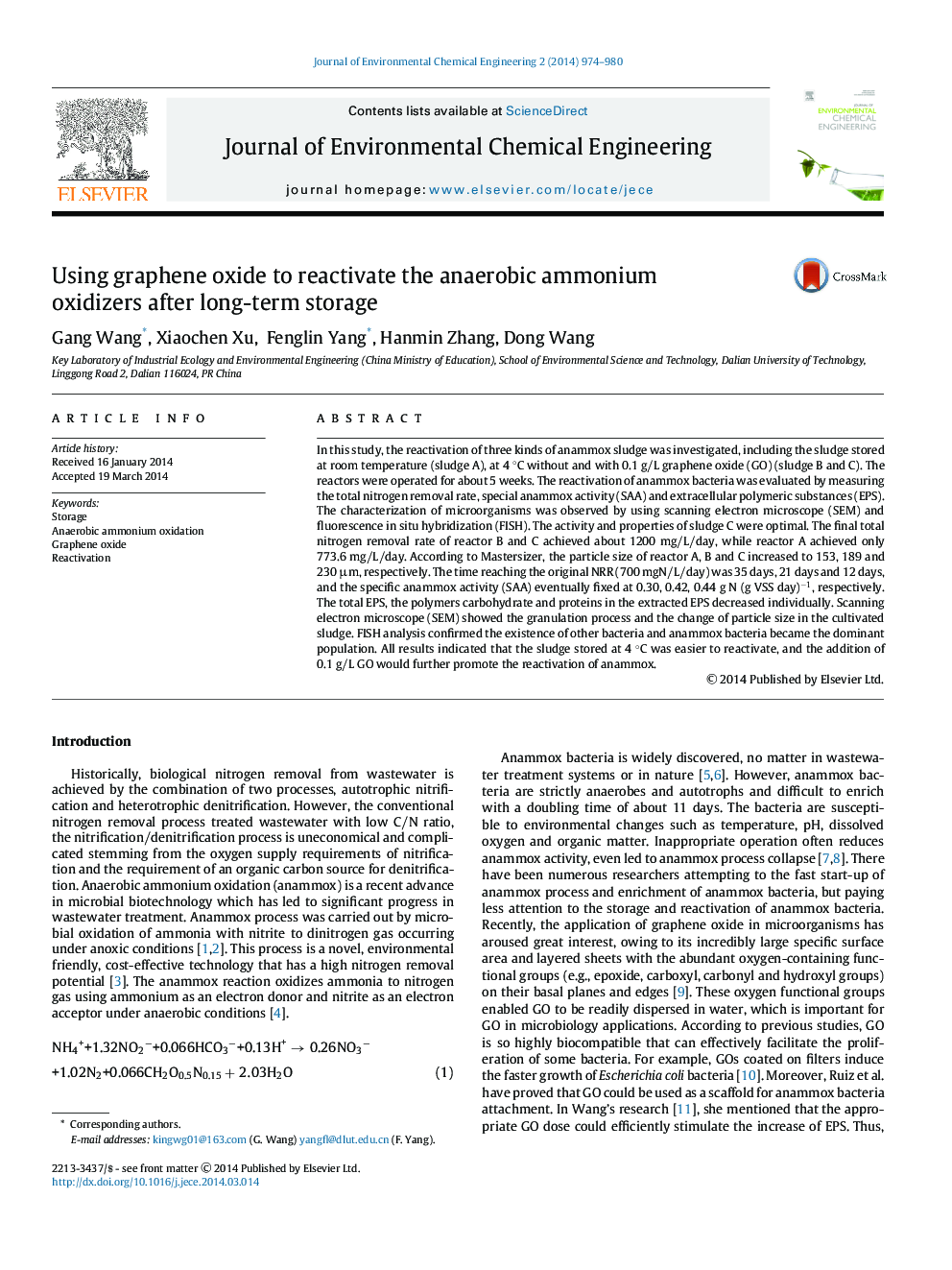| کد مقاله | کد نشریه | سال انتشار | مقاله انگلیسی | نسخه تمام متن |
|---|---|---|---|---|
| 221761 | 464265 | 2014 | 7 صفحه PDF | دانلود رایگان |
• The storage of anammox bacteria at 4 °C was better than that at room temperature.
• The cell membrane of bacteria was not damaged by sharp edges of the GO nanowalls.
• Adding 0.1 g/L GO enhanced the activity of anammox and shortened the start-up time.
• GO can be used as a scaffold for anammox bacteria to promote the granular process.
In this study, the reactivation of three kinds of anammox sludge was investigated, including the sludge stored at room temperature (sludge A), at 4 °C without and with 0.1 g/L graphene oxide (GO) (sludge B and C). The reactors were operated for about 5 weeks. The reactivation of anammox bacteria was evaluated by measuring the total nitrogen removal rate, special anammox activity (SAA) and extracellular polymeric substances (EPS). The characterization of microorganisms was observed by using scanning electron microscope (SEM) and fluorescence in situ hybridization (FISH). The activity and properties of sludge C were optimal. The final total nitrogen removal rate of reactor B and C achieved about 1200 mg/L/day, while reactor A achieved only 773.6 mg/L/day. According to Mastersizer, the particle size of reactor A, B and C increased to 153, 189 and 230 μm, respectively. The time reaching the original NRR (700 mgN/L/day) was 35 days, 21 days and 12 days, and the specific anammox activity (SAA) eventually fixed at 0.30, 0.42, 0.44 g N (g VSS day)−1, respectively. The total EPS, the polymers carbohydrate and proteins in the extracted EPS decreased individually. Scanning electron microscope (SEM) showed the granulation process and the change of particle size in the cultivated sludge. FISH analysis confirmed the existence of other bacteria and anammox bacteria became the dominant population. All results indicated that the sludge stored at 4 °C was easier to reactivate, and the addition of 0.1 g/L GO would further promote the reactivation of anammox.
Journal: Journal of Environmental Chemical Engineering - Volume 2, Issue 2, June 2014, Pages 974–980
